Silk Road Cuisine (丝路饭) Posted by Stephen on Feb 6, 2012 in Culture
Now that we’ve covered traditional Chinese food, I thought I’d sit back and let my stomach do a little reflection on the tastes and textures of food along the Silk Road. Unlike traditional Han Chinese food, Silk Road Cuisine is blend of different cultures and spices from outside China. Because of Buddhist and Muslim influences that spread through Xinjiang (新疆) and Gansu (甘肃) province, this first batch of Silk Road food will focus less on traditional Han Chinese dishes, and instead on Pan-Asian cuisine including spices and flavors unknown to most westerners. So let’s get down to it, 吃吧!
Lamb (羊肉)
So how do Muslim Chinese people deal with a country that’s fanatical for pork? BAAAAh. 羊肉 (yáng ròu) or lamb is your answer. It is the meat staple of western China (other than delicious yaak which will be covered shortly) and seems present in every dish (sorry vegetarians). Why so much lamb? Well take a look around you. There isn’t much vegetation or grassland. All you see is craggy peaks, rugged landscapes and small shrub brush–a natural habitat for goats. Also consider this: a goat’s plant biomass (what they consume) to meat efficiency is much greater than that of cows, pigs or other large livestock. They can cover large areas of rough terrain, foraging off of the most basic of shrub plants and prarie grasses without much cost to the shepherd.
Goats are ideal for this terrain and vegetation, plus they provide more than just meat–their lambs’ wool keeps the locals from freezing during the winters. So naturally, you’ll bump into a few goats as you traverse Xinjiang and Lake Karakul.
Like I mentioned earlier, lamb is in almost everything (and definitely served at every meal). Most commonly you find lamb in 拉面 (lā miàn) or pulled noodles, which are served in a steaming lamb broth and accompanied by thin slices of lamb shank, cilantro, peppers and a variety of spices. For a previous post on 拉面, pulled noodles click here. If you like it nice and spicy, you can add 辣椒 (là jiāo) or hot pepper flakes/sauce by the spoonful. Making 拉面,pulled noodles:
Then there is the ubiquitous 羊肉串儿 (yángròu chuàner) or lamb kebabs (meat on a stick). While very popular throughout China (and a staple of late night bar-hoppers), 串 started as a central asian food stuff. And the way they do lamb chuan here is incredible. Chunks of lamb shank are spaced between chunks of fat that sizzle, melt and absorb the flavor of the meat, spices and peppers. Anytime, be it day or night, you can throw a couple 块 the way of a street vendor and have yourself a tasty snack.
The nightlife in Kashgar is all about, grabbing a dozen or so 羊肉串s, a couple of beers and a deck of cards as you chat, eat and drink with your 朋友s in the cool evening air. It truly is carnivore heaven!
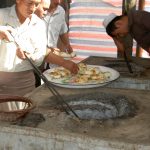 Yet the Xinjiang love for lamb extends past noodles and kebabs. One of my favorite surprises eating in Kashgar, was eating these oven-cooked, lamb pastry puffs simply called 羊包 (yángbāo). Imagine a small pastry of naan-like bread (we’ll get to naan later), filled with ground lamb, onions and pepper, that are cooked in circular metal kilns and then imagine you are starving and have just been on a bus for ten hours. Sound pretty tasty now, right? These “lamb puffs” were lifesavers during my stay in Kashgar.
Yet the Xinjiang love for lamb extends past noodles and kebabs. One of my favorite surprises eating in Kashgar, was eating these oven-cooked, lamb pastry puffs simply called 羊包 (yángbāo). Imagine a small pastry of naan-like bread (we’ll get to naan later), filled with ground lamb, onions and pepper, that are cooked in circular metal kilns and then imagine you are starving and have just been on a bus for ten hours. Sound pretty tasty now, right? These “lamb puffs” were lifesavers during my stay in Kashgar.
Feeling hungry?Just walk up to a vendor with cash out and he’ll already be reaching into the oven with a pair of ridiculously long chopsticks to pull out your snack. Just watch out, they are extremely hot!
While I wasn’t a big fan of lamb going into this Silk Road trip, I quickly was won over after eating Chinese and Turkic preparation styles of mutton. That being said, living off of lamb alone, and eating it with every dish does take its toll on your 肚子 (stomach). After two weeks of lamb, I wanted something new if only to get the taste of lamb out of my mouth.
Yak (牦牛)
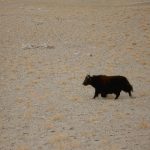 牦牛 (máo niú) or Yaak is simply delicious. It treads that fine line between steak and pork–lean, yet somehow fatty. The translation of 牦牛 literally means “hairy/furry cow”. A very apt translation if you ask me. Did I mention how logical of a language Chinese is?
牦牛 (máo niú) or Yaak is simply delicious. It treads that fine line between steak and pork–lean, yet somehow fatty. The translation of 牦牛 literally means “hairy/furry cow”. A very apt translation if you ask me. Did I mention how logical of a language Chinese is?
After only lamb in Kashgar and Urumqi, Xia He and Lake Karakul were of a different mentality. Sure there were lamb running around everywhere, and there were some lamb dishes, but for us foreigners, who haven’t experienced life on the great plains, we had to try yak–in all of it’s forms. I didn’t expect much, but was surprised by the flavor from these hairy hulks.
Yak is considered somewhat of a delicacy and clearly we were being treated to something special. There was yak milk or 牦牛奶 (máo niú nǎi), yaak butter and yak yogurt…all of which I would not feed to my worst of enemies. Yak dairy, like yak, is very very fatty, and is similar to drinking butter-milk. Worse yet, when mixed with alcohol, it somehow manages heighten, not suppress, the flavor of 白酒 (grain liquor) while still feeling like you drank a stick of butter. 恶心!
But what really stood out for me, was the yak stew, a hearty mixture of potatoes, chunks of yak grizzle, gravy sauce and peppers. As the cold and 30 mph winds cut into us, this rib-sticking meal kept us warm and in high spirits. I think the Irish would really fit in well here, living of this diet of “meat and potatoes” and grain liquor “yak milk bombs”. The food fits the environment as such a high calorie diet is necessary out here on the open plains. So I say to you: Yak it up!
Naan (馕)
For those non-carnivores (or fans of bread), western China has got your covered. Naan bread, or 馕 (náng), is a round, flattened bread, originally from central Asia. It is coated in a slight oil, salt and some chili pepper flakes and is served fresh out of the oven. Just like kebabs and pulled noodles, naan vendors are serving their craft everywhere at anytime. A loaf (think pizza crust) is only a few 块,and will rid you of the rumble in your stomach.
While delicious just by itself naan works best as a compliment to a Xinjiang meal, as naan is perfect for soaking up soup broth, can be used to make a “lamb sandwich” or my personal favorite: “uighur pizza”, which involves heaping 辣子鸡丁 sauce all over the naan, and then helping yourself to a slice. I think I know where Marco Polo got the whole pizza idea thing from.
Check out some pictures below (not for the squeamish):
Follow Steve on twitter: @seeitbelieveit

Build vocabulary, practice pronunciation, and more with Transparent Language Online. Available anytime, anywhere, on any device.
About the Author: Stephen
Writer and blogger for all things China related. Follow me on twitter: @seeitbelieveit -- My Background: Fluent Mandarin speaker with 3+ years working, living, studying and teaching throughout the mainland. Student of Kung Fu and avid photographer and documentarian.



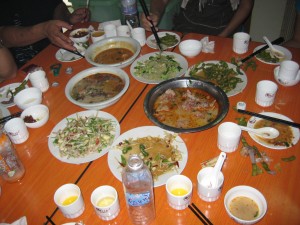
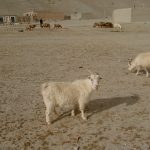

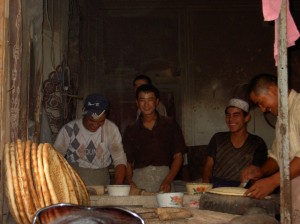
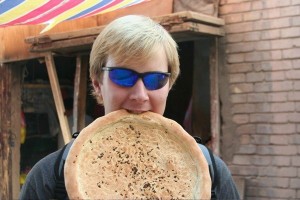
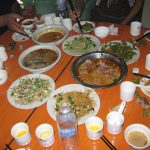
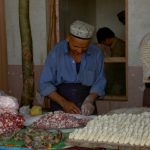
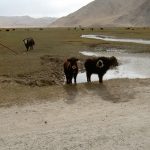
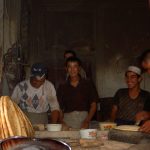
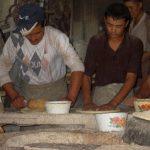
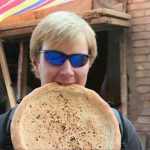
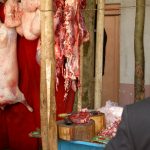
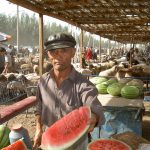

Comments:
Jaye:
Yum! It is late in my neck of the woods (3 A.M.), but I will be back later to read this in its entirety.
David Lloyd-Jones:
A mouth-watering entry in a fine series.
-dlj.